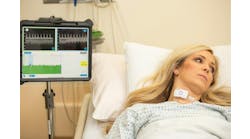A new report released by the National Institute of Standards and Technology (NIST) shows support for two safe practice recommendations for the use of copy-and-paste in electronic health records (EHRs).
The recommendations were developed by a multi-stakeholder collaborative, the Partnership for Health IT Patient Safety, convened and operated by healthcare research organization ECRI Institute in 2013. This was the Partnership's first set of safe practice recommendations. NIST, in conjunction with the Fors Marsh Group (FMG), ECRI Institute, and the U.S. Army Medical Research and Material Command's (MRMC) Telemedicine and Advanced Technology Research Center, then conducted a human factors evaluation of the use of copy-and-paste to determine if the Partnership's recommendations were supported by provider actions and understanding.
In the report, data overwhelmingly supported two of the Partnership's safe practice recommendations—making copy-and-paste materials easily identifiable and ensuring that the provenance of the material is readily available. The study indicated that clinical users could benefit greatly from training on when and how copy-and-paste is appropriate to use.
Participants in the study noted that preserving integrity of the information was their primary concern despite the time saving and efficiencies derived from this functionality. Loss of integrity was identified in four areas: finding the information, copying information, understanding the information, and reusing information.
"Using outdated information, truncating information, or including a large amount of potentially extraneous information can all lead to safety issues," Lorraine Possanza, patient safety, risk and quality program director at ECRI Institute, said.
All of these areas call for increased attention to how and when the copy-and-paste functionality is used. The Partnership's safe practice recommendations and implementation toolkit, released in February 2016, provides guidance on the safe use of the copy and paste feature in 4 areas:
- Provide a mechanism to make copy-and-paste material easily identifiable
- Ensure that the provenance of copy-and-paste material is readily available
- Ensure adequate staff training and education regarding the appropriate and safe use of copy-and-paste
- Ensure that copy-and-paste practices are regularly monitored, measured, and assessed
To this end, in Medscape’s EHR report 2016, released last summer, providers were asked about the copy-and-paste functionality in EHRs, which attorneys say creates a host of problems. Interestingly, many physicians said it's a necessary practice in order to move through their day, according to the report. And indeed, 31 percent of physicians often copy and paste, 11 percent always do so, and 24 percent do so occasionally.

